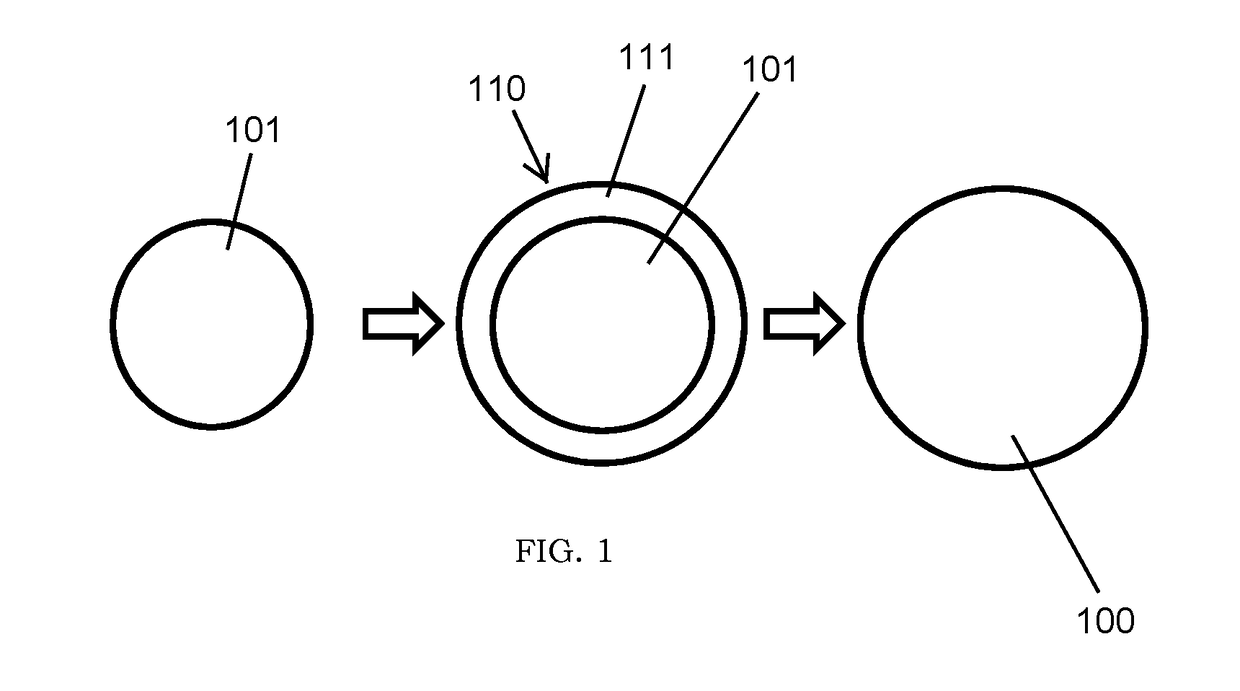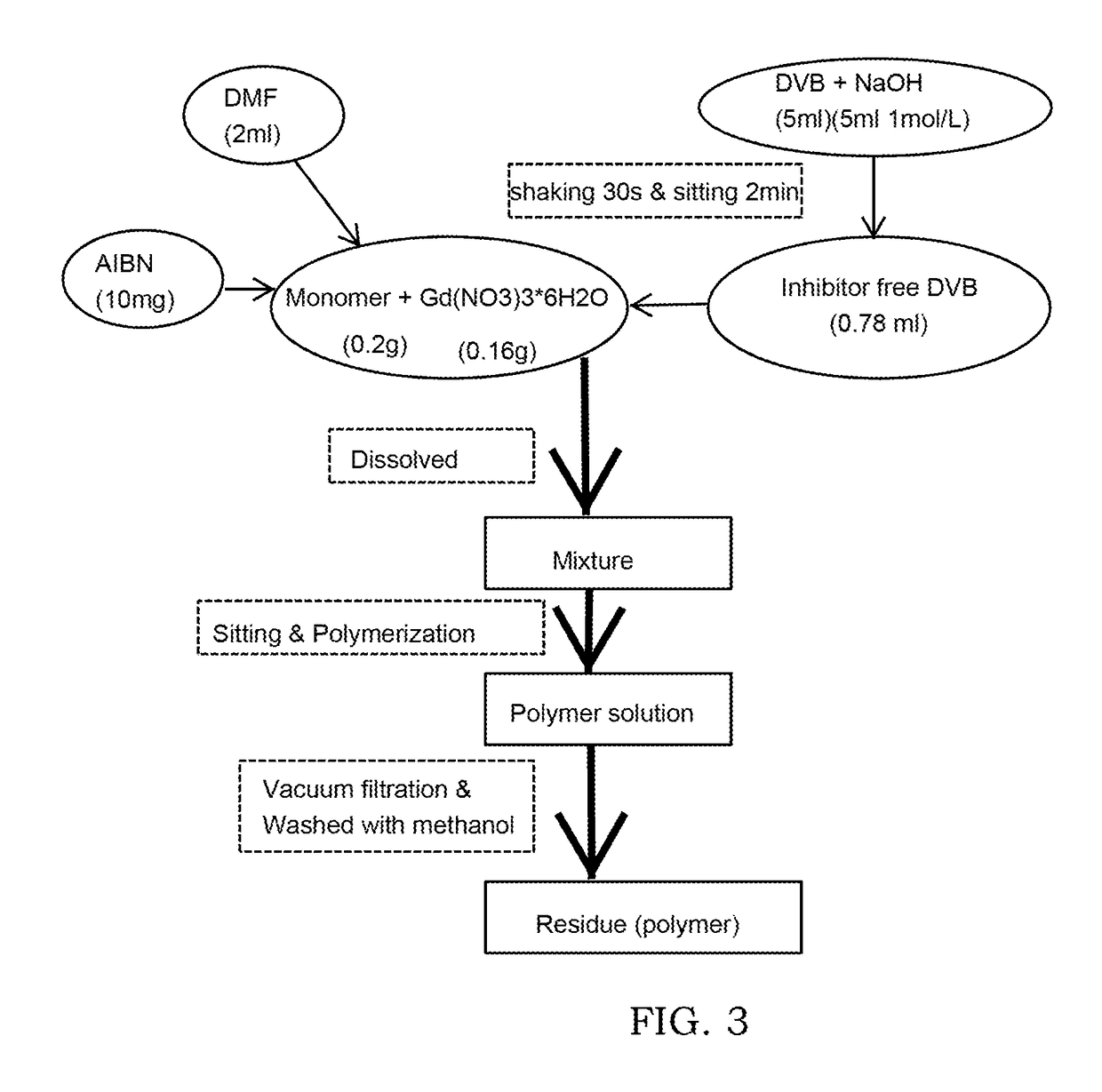Functionalized Adsorbents for the Recovery of Rare Earth Elements from Aqueous Media
a technology of adsorbents and rare earth elements, applied in the field of rare earth elements recovery from aqueous media, can solve the problems of difficult to recover rees from complex aqueous media, difficult to extract and concentrate them for industrial use, and high cost and difficulty
- Summary
- Abstract
- Description
- Claims
- Application Information
AI Technical Summary
Benefits of technology
Problems solved by technology
Method used
Image
Examples
Embodiment Construction
[0022]In one embodiment, ion imprinted polymers (IIP) 110 are tethered to surfaces of solid substrates 101, creating a functionalized adsorbent 100. In alternative embodiments, rare earth element (REE)-reactive ligands 120 are attached to the substrate 101, which can include silica and sulfonated polystyrene, for example. By attaching the REE-attractive material 110, 120 to the surface, a high-surface area adsorbent 100 is created that has specific binding sites for REE.
[0023]According to one embodiment, a solvent exchange process is optimized for coating the IIP 110 onto the substrate 101, as shown schematically in FIG. 1. The IIP 110, which initially contains template REE ions 111, is dissolved in toluene, methylene chloride, or another suitable solvent for the IIP 110. After mixing the IIP 110 solution with the substrate 101, a second solvent, such as diethyl ether, in which the IIP 110 is insoluble, is slowly added, causing a controlled deposition of the IIP 110 onto the surface...
PUM
| Property | Measurement | Unit |
|---|---|---|
| temperature | aaaaa | aaaaa |
| temperature | aaaaa | aaaaa |
| concentration | aaaaa | aaaaa |
Abstract
Description
Claims
Application Information
 Login to View More
Login to View More - R&D
- Intellectual Property
- Life Sciences
- Materials
- Tech Scout
- Unparalleled Data Quality
- Higher Quality Content
- 60% Fewer Hallucinations
Browse by: Latest US Patents, China's latest patents, Technical Efficacy Thesaurus, Application Domain, Technology Topic, Popular Technical Reports.
© 2025 PatSnap. All rights reserved.Legal|Privacy policy|Modern Slavery Act Transparency Statement|Sitemap|About US| Contact US: help@patsnap.com



